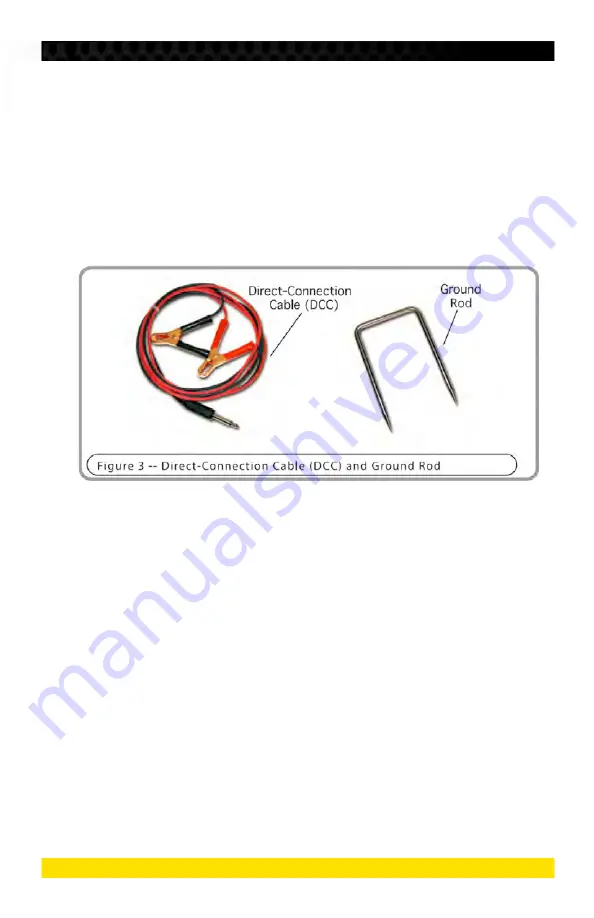
4. Ground Rod.
This U-shaped rod, also included with every 902, simply
gives the operator a means of establishing a solid ground for
conductive tracing. To use the ground rod, push it into some
soil, and clip the black lead of the DCC to it.
5. GC-2 Cable Clamp.
This accessory is useful when the operator wishes to ener-
gize a specific line, but there is no electrically exposed area
to make a conductive hook up. If the GC-2 is clamped
around a specific line, it will inductively energize the line with
a focused signal. The line will become considerably more
energized than surrounding lines, and therefore easily trace-
able. The Model GC-2 clamp is sold separately.
6.
Headphones are also sold separately from the Model 902.
Any set of headphones may be used with the Model 902
Locator, provided it has a standard quarter-inch plug. We
recommend a comfortable “walkman” style of headphones,
which comes with a quarter-inch plug adapter.
Model 902 Pipe & Cable Locator
7
























